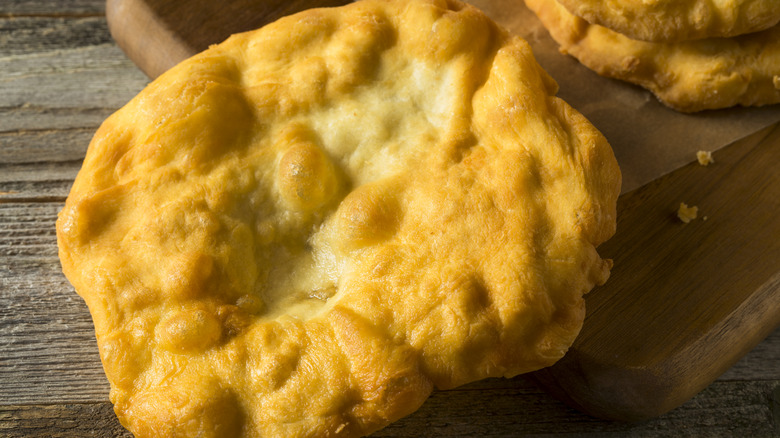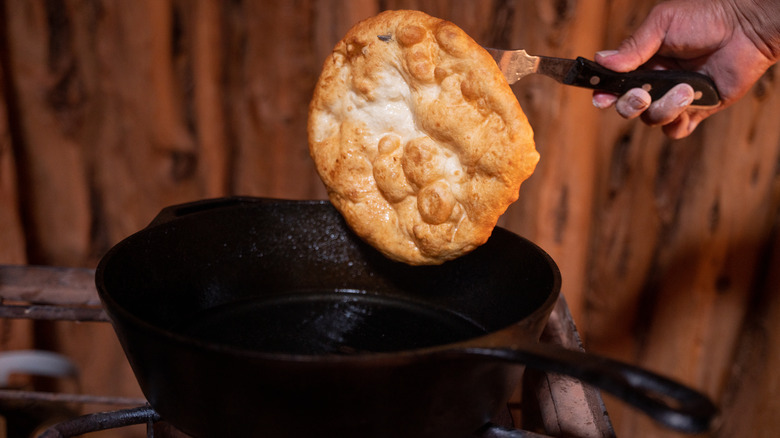For Hassle-Free Fry Bread, There's One Canned Shortcut
If you've ever been lucky enough to attend a traditional Native American powwow or state fair, there's a high likelihood that you've tried fry bread. Made from (as the name suggests) unsweetened deep-fried dough, fry bread is a delicious and historically complicated delicacy that has been enjoyed by Indigenous American communities for over 160 years. While fry bread is traditionally made by kneading together flour and lard, there's one common canned ingredient you can use to take the hassle out of making a fresh batch at home: biscuit dough.
If you're already used to popping open a can of biscuit dough as a shortcut ingredient for big-batch donut holes or to reduce your pot pie prep time, then this fry bread hack should be an easy switch. Simply roll the dough out into flat circles before frying each one until golden brown, about 10-20 seconds per side. Then, you can enjoy your fry bread as is, slather it with some honey butter, or load it up with any number of sweet and savory toppings. Pile it high with ground beef, lettuce, cheese, and salsa to make a classic and comforting fry bread taco, or dress it up with layers of smoked salmon and fresh herbs to enjoy the extra-fancy fry bread that used to sell out at NYC's Covina.
The complicated history of fry bread
In the mid 1800s, the United States government was pushing into then-Spanish controlled territories that were still inhabited by Indigenous communities. In order to clear the land for incoming settlers, entire native tribes were violently forced to relocate from their ancestral lands, often traveling hundreds of miles by foot without sufficient food or water. One such relocation happened to thousands of Navajo (Diné) people in 1863, when they were made to migrate over 300 miles from Arizona to New Mexico during a deadly journey now known as The Long Walk.
Those who survived the migration to Bosque Redondo Reservation were immediately met with food insecurity, as the land in New Mexico wasn't amenable to growing the beans, squash, and corn that the Diné traditionally relied on for survival. To prevent widespread starvation, the U.S. Government provided those on the reservation with meager pantry staples like sugar, flour, and lard. By the grace of Indigenous culinary ingenuity, fry bread was born. Because of its easy preparation and storage, fry bread quickly became a staple and a symbol of Native American cultural resistance, and is still enjoyed as such across the country today.


